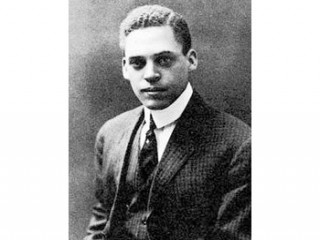
Ernest Just biography
Date of birth : 1883-08-14
Date of death : 1941-10-27
Birthplace : Charleston, South Carolina
Nationality : African-American
Category : Science and Technology
Last modified : 2011-04-06
Credited as : Biologist, marine biology, cytology and parthenogenesis
Ernest Just was a prominent African American biologist who was noted for his contributions to marine biology.
Ernest Everett Just was born on August 14, 1883, in Charleston, South Carolina. He had a rough childhood; his father died when he was very young, leaving his mother to fend for herself and her family. He was educated by his mother until the age of 13, when he entered the Colored Normal, Industrial, Agricultural and Mechanical College. He received a Licentiate of Instruction that permitted him to teach in the black public schools of South Carolina.
The prospects for advancement in the school system were small, however, and Just wanted to continue his education. He thus obtained a scholarship to attend the Kimball Union Academy in Vermont, where he was the only African American in a group of 170 students. There he received a broad education, and he was able to continue his schooling at Dartmouth, where he won a degree in biology with a minor in history in 1907. Just soon obtained a teaching position at Howard University, the most prestigious African American institution in the country at the time. He helped to develop the science curriculum there, largely by teaching zoology and setting up laboratories.
Determined to pursue the same type of career that a white man would have in science, Just started spending his summers as research assistant at the famed Marine Biology Laboratory in Woods Hole, Massachusetts. There he worked under Frank Lillie, the head of the Zoology Department of the University of Chicago. Lillie helped him enroll "in absentia" in the Ph.D. program at the University of Chicago, and after considerable delay, due mostly to his teaching responsibilities at Howard, he received his Ph.D. in 1916, becoming one of the first African Americans to do so.
Throughout his life Just had problems obtaining funding for his work, partly because of racial discrimination and partly due to the general lack of funding for science during the Great Depression of the 1930s. He continued to teach on and off at Howard for the remainder of his life. He also went to Europe several times, having achieved greater recognition there than in his own country. Just preferred Europe to the United States. In 1938 he went to France with the intention of staying for good. In the middle of 1940, however, the Nazis drove him out, and he was forced to return to Washington, D.C., where he died on October 27, 1941.
During the earlier stages of his career Just was primarily concerned with collecting a mass of verifiable data on marine eggs. He concentrated on some of the fundamental problems of cell biology, and in particular dealt with the problem of parthenogenesis, or the ability of certain types of eggs to reproduce without sperm. He developed a precise and much respected style of experimentation and was considered an authority on experimentation with marine invertebrates. He wrote a number of well-received articles on experimental methods that was later collected in a volume entitled Basic Methods for Experiments on Eggs of Marine Animals (1939).
Once Just became an established scientist with a worldwide reputation he started concentrating on a theory that had been brewing in his mind for several years. He theorized that the outer part of the cell (the cortical cytoplasm) was more significant in vital life processes than had been previously recognized. He thought, in fact, that it was a crucial link between an animal and its environment. One way he used to show this was by showing that the fertilization of an egg was independent of how mature it was and that the cytoplasm thus became important in the fertilization process.
While in France, Just wrote a book with Hedwig Schnetzler, his second wife and research assistant, entitled The Biology of the Cell Surface (1939). He explained this theory, along with many of his past scientific achievements, in this book. He also categorized biological experimentation and claimed that it fell into three categories: experiments done on living systems, those done on killed living systems, and those done on nonliving systems. He showed the importance of the purity of the system being tested, which was an aspect that had not been emphasized enough by most biologists. Finally, the book was also somewhat of a philosophical treatise, endeavoring to answer the question "what is life?"
Just was also known for his work on cell morphology (the form and the changes in form of a cell), and in particular cell division, the process by which living cells reproduce themselves. Because of his problems with funding, with certain members of the American scientific community, and with racial discrimination, Just was never able to undertake a major research project. However, the accumulation of his work is important to the field of marine biology. His achievements were particularly significant and encouraging to the African American scientists that succeeded him.
















